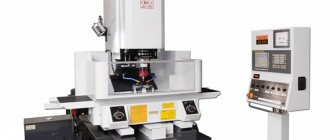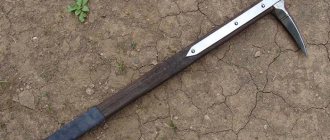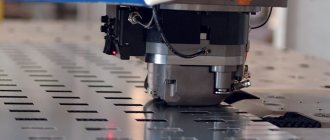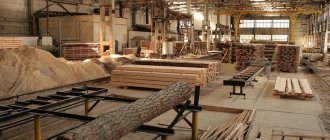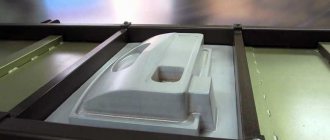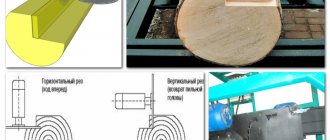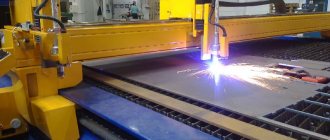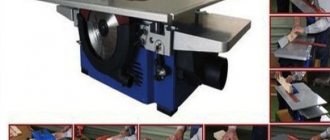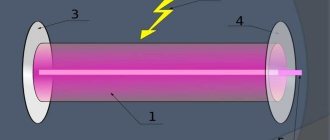In woodworking industries, wood dust is released into the air one way or another. This is unavoidable when making wood pellets, since the raw materials are crushed and transported from one stage to the next. The sawdust moves inside a sealed pneumatic transport system using air flows. These streams need to be removed from the system and cleaned up.
Aspiration systems are used to clean the air from wood dust
(solid particles ranging in size from 1 to 200 microns). This is necessary to prevent environmental pollution from plant emissions, as well as for the productive and safe work of company employees. Wood dust is hazardous to health, it can accumulate in the lungs and can also irritate the retina of the eyes. Fine dust ranging in size from 1 to 10 microns is especially dangerous: mucous membranes do not retain it. Accumulations of wood dust pose a threat to fire safety. The same can be said about grain dust at grain processing plants.
We will look at how the aspiration system for woodworking works and what dust filtering devices are used in pellet factories.
Main types of aspiration systems
Aspiration systems are divided into the type of exhaust air removal.
Direct flow
— the air mass after filtration is removed outside the room.
Recirculating
— implemented in such a way that the purified air is partially or completely returned to the room.
The latter option is considered preferable because it reduces heat loss indoors. This saves heating resources. However, the quality of air purification must be ideal to prevent contamination of workers' lungs.
Aspiration systems can also be monoblock or modular.
Aspiration monoblocks
carry out filtration near the direct source of dust. If there is only one, and the production is small, then the choice of a monoblock installation is justified.
Modular aspiration systems
consist of several units and a network of air ducts. They are always developed according to an individual project in order to purify the air at several stages of the production cycle. This is the optimal choice for full-scale industrial production.
What does the aspiration system consist of?
In large industries, where dust emissions occur in several areas, industrial aspiration consists of several devices.
- Dust fan
- the most important element that pumps the required volume of air for the efficient operation of the entire system. The device is selected based on the volume and pressure of the air flow, taking into account its average losses. Most often, this role is played by a medium- or high-pressure radial dust fan.
- Dust collector
- a device that separates air and solid particles. Typically this is a cyclone or bag filter. As the flow passes through the device, sawdust settles inside.
- Fine filter
— necessary to get rid of microparticles of wood dust to completely clean the air before being released into the atmosphere/returned to the workshop.
- Air ducts
— sealed pipes through which raw materials are transported.
- Dust container
- installed together with a dust collector or fine filter to collect settled materials.
In pellet plants, there are several stages of the production cycle at which dust is generated and where the installation of a dust collector is necessary.
- The drying stage is when hot gases are removed from the drying drum in which the wood chips were agitated.
- The grinding stage is when the flow of crushed sawdust along with air enters the cyclone or directly into a hopper with aspiration bags.
- The cooling stage is when a fan blows air and passes it through a mass of hot granules, the mass of which contains small non-granular particles and dust.
Milling-canter unit in the multi-rip machine UPT-250M
Under the steel casings of the relatively small UPT-250M, two machines are hidden at once - a canter and a multi-saw. The log is first formed into a block, which is immediately sawed with horizontal discs. As can be seen from the diagram, the side surfaces of the log are not sawed off, but are removed with cutters, going into sawdust. As a result, at the output we get a pack of edged boards (or timber) and two slabs.
A peculiarity of processing the fine gauge on the UPT-250M machine is that the block is formed not by sawing the log, but by milling
Scheme of forming a block and sawing a log on UPT-250M
From time to time we are asked the question: wouldn’t it be better to install vertical circular saws instead of cutters? After all, the side slab could potentially be recycled (additional profit!), and there would be less sawdust...
This design option was indeed considered when designing the machine, but was rejected as ineffective for a number of reasons. When developing the UPT-250M concept, we sought to simplify and reduce the cost of processing thin gauge into lumber of export quality as much as possible. At the same time, it was necessary to minimize the occupied space. The milling-saw unit allows you to solve these problems much more efficiently than another saw unit.
Croaker - costs are greater than potential profits
In some cases, croaker is indeed of interest for processing. An additional board can be cut from a thick slab using a special slab saw. And when working with species such as cedar or oak, each additional board is valuable. Such raw materials usually have large diameters. The cutting scheme is thought out very carefully, and the labor costs pay for themselves.
The situation is completely different when working with thin gauge logs - logs of small diameter, often with a large taper (the so-called “carrots”) and curvature. The croaker turns out thin and uneven in thickness.
Low-grade wood - low-grade slab
It is unprofitable to process such slabs into boards: labor costs are high, but the useful result is negligible . The production of hump boards is impractical due to the low yield.
In most cases, slabs from fine gauges are only suitable for the production of process chips, for which crushing machines are used. The milling block allows you to eliminate this stage from the work cycle - the side slab immediately goes into sawdust.
Additional slabs automatically increase the time spent on sawing each log, because the slab has to be retracted manually. While the sawdust is sucked out by the aspiration system, without delaying the work process.
Using additional saws instead of cutters will create an even greater problem when sawing the thin gauge not into timber, but into an edged board. After the log passes through a series of horizontal circular saws, the slab will split into several thin pieces.
All these croaker trimmings will have to be removed manually
Obviously, such wood processing waste will create much more problems with disposal than sawdust. Just imagine how many of these scraps will accumulate!
We extend the working life of circular saws
As can be seen from the previous diagram, when forming a block by sawing, the side slabs are sawn into several thin parts as they pass through the machine. The working surface along which horizontal saw blades pass increases. Accordingly, the saws will become dull faster and exhaust their service life earlier.
When using cutters, the side surfaces of the log are removed, destroying the slab into sawdust. As a result, circular saws work on a clean surface - and this is an important advantage.
The milling and sawing unit in the fine gauge processing line allows you to significantly increase the service life of saw blades
Of course, the cutters themselves also require careful and timely maintenance. Any cutting tool is a consumable item. But in this case, the consumables are not the entire cutter, but only removable knives and carbide plates (the actual cutting part). Their cost is several times cheaper than a set of circular saws, and therefore the use of cutters in the UPT-250M machine is economically profitable.
“Wood noodles” are recycling waste that you should not mess with
Installing cutters also allows you to get rid of the “wood noodles” accompanying the side slabs. What is it (it’s tempting to say “and what is it eaten with”)? This is a cut that is formed at the intersection of the disks.
The thickness of this cut is small, but it causes big problems. After all, it also needs to be moved away from the machine - and also manually. In this case, four such trimmings are obtained from each log. “Wood noodles” cannot be poured out like sawdust. Since the log is not perfectly round, these pieces break off, sometimes get stuck inside, and have to be removed from different sides of the machine. This is labor-intensive, time-consuming - productivity and profits are again lost.
Sawdust is an unobvious advantage
Yes, when using cutters, a lot of sawdust is produced during the processing of fine gauges. But ensuring the removal of sawdust is incomparably easier than removing slabs and “wood noodles”. In the UPT-250M line, sawdust is sucked out of the working units by an aspiration system, and some of it is poured under the machine. At a number of enterprises, sawdust transportation was organized by digging a ditch under the machine and installing a scraper conveyor. And in this case, there is no need to waste human resources on their removal.
Any milling-canter equipment allows you to simultaneously solve two problems - produce lumber and chop trim. When sawing on the UPT-250M, the sawdust fractions have optimal sizes so that they can be easily removed by the aspiration system and at the same time find application in the production of fuel granules (pellets) .
Of course, sawdust is inferior in quality to technological chips that come out of crushing machines. But the calculation for the production of wood chips is not included in the concept of the UPT-250M machine. The production of high-quality industrial chips reduces the feed rate and surface quality of the finished lumber. The cutter knives on the UPT-250M machine grind the side surfaces of the log into sawdust, ensuring high accuracy of the board geometry and a smooth surface.
Accuracy of edged board geometry - every nuance is important
Let's summarize:
- The advantage of the milling-saw design is that it radically simplifies the technology for processing fine gauges.
- This sawing technology makes it possible to obtain high-quality lumber from low-grade wood . The maximum deviations in geometric dimensions reach only +- 1 mm.
- Simplifying the process of removing waste from the machine allows you to increase productivity and reduce the number of workers .
- The milling and sawing unit in the fine gauge processing line allows you to significantly increase the service life of circular saws.
Anyone who has wondered what to do with a thin gauge? - understands how non-trivial this task is. To turn low-grade wood into money, sawing must be fast, energy-efficient, and the work must involve as few people as possible - because These are salary expenses. Trying to squeeze the maximum out of a small log, we spend more effort and resources than we receive benefits. A number of technological solutions in the design of the UPT-250M multi-saw machine (including the use of cutters) make it possible to make the process of processing fine gauges as simple and effective as possible.
More information about the machine for processing thin gauge UPT-250M
How does the aspiration system work in pellet production?
- The fan generates a stream of air, which directs the crushed sawdust into the dust collector.
- The air mass with sawdust passes through a cyclone or bag filter. Microparticles of wood separate and fall down. Purified air flows out of the system.
- In the case of a cyclone, additional filtration from fine dust is required at the outlet. This function is performed by a fine filter. The smallest wood fibers invisible to the eye settle in it.
- Purified air is removed from the room or returned, depending on the type of system.
When designing industrial aspiration, the following main factors are taken into account:
- Number of machines creating dust;
- Required power;
- Energy consumption of devices;
- Climate, the need to maintain a stable temperature in the room.
Where is it used?
Removing small waste from machine tools at any enterprise is an important organizational task. Woodworking is one of the industries with the maximum equipment capacity and corresponding amount of waste. If the process of constant waste disposal is not properly organized, labor productivity drops sharply due to the need to constantly interrupt for cleaning the premises.
A fan for removing sawdust and shavings turned out to be the optimal solution to the problem, operating with virtually no human intervention and completely eliminating the need for enterprise workers to carry stretchers with waste.
The main area of application is carpentry or woodworking enterprises, furniture production and other workshops that process solid wood. In addition, a dust fan for sawdust has also proven useful at other enterprises that work with light, fine-grained bulk materials that need to be transported or removed from the premises. An example of such use would be grain elevators, enterprises producing cereals, etc.
Cyclone for sawdust and wood dust
Now let's talk about the types of dust collectors.
Cyclone
- the most common solution for two-phase purification of air masses from raw material particles. It is a hollow metal cone with a cylindrical exhaust pipe in the center.
Operating principle of a cyclone
- Negative pressure is created inside the cone.
- The flow, entering the conical chamber, spirals downward.
- Fractions of raw materials collide with the walls and fall down onto the sluice gate, the rotating blades of which capture the material and unload it into the lower hopper.
- The air, cleared of visible dust, rushes upward to the exhaust pipe.
- At the exit from the cyclone, it is filtered again, passing through a fine filter. A bag filter is often used for these purposes.
Cyclones have been chosen for woodworking for many decades due to the following advantages:
:
- Simple and reliable design with no moving parts;
- They do not become clogged with dust, so they do not lose efficiency;
- Proper operation at almost any temperature;
- Stable hydraulic resistance;
- Convenient use in pneumatic transport systems for continuous movement of raw material flows;
- Great maintainability.
The main disadvantage of these devices is the need for additional filtration, since they do not effectively retain fine particles. Without an additional filter, more than 2% of invisible wood dust can enter the atmosphere, which is unacceptable according to environmental standards.
It is also necessary to develop a centralized aspiration system with a powerful fan for cyclones.
Features of operation and maintenance
Radial fans are highly reliable and require virtually no maintenance. Depending on the location conditions, the housing is periodically cleaned from dust and dirt, painted and other cosmetic procedures are performed. For installations located outdoors, periodic lubrication of the motor bearings or the individual impeller drive shaft is recommended.
Expert opinion
Online ventilation store "Runicom"
The main problems encountered during operation are the formation of congestion due to the presence of sharp turns or forks in the air ducts. The solution to the problem is to install channels without sharp turns or changes in cross-sectional area, as well as install gratings with large cells to filter out too large fragments of material.
To eliminate the resulting blockages, inspection hatches are installed on the air ducts, and special removable panels are made at the inlet and outlet openings of the fans, allowing access to the impeller for cleaning and removing foreign objects.
Bag filters
The second effective solution for industrial aspiration. The bag filter is a series of non-woven polyester bags with internal frames.
Principle of operation
- The fan directs flows of contaminated air through the bags.
- Due to the properties of the hose material, wood dust settles on the inner surface of the hoses.
- The air passes through the material and, completely purified, returns to the workshop.
- At the bottom of the sleeves there are boxes or bins where dust falls. They need to be emptied periodically.
- As particles settle inside the filter, its effectiveness decreases. Therefore, an auxiliary mechanism is used - automatic shaking or blowing through the bags - so that the sawdust falls down, freeing the inner surface of the filter.
The main advantage of bag filters is that they retain up to 99% of fine particles, and the air mass is suitable for return back to the workshop. Thanks to this solution, there is no heat loss.
The disadvantages of bag filters include the relatively quick filling of the lower bunkers.
Recommended Models
Dust fans VCP 7-40 priced from 14,238 rubles.
- -20%
Dust fans VCP 7-40VTSP 7-40 No. 10 11 kW 750 rpm
out of 5
323 200 ₽ 258 560 ₽Select...Add to Wishlist
- -20%
Dust fans VCP 7-40
VTSP 7-40 No. 10 22 kW 1000 rpm
out of 5
353 500 ₽ 282 800 ₽Select...Add to Wishlist
- -20%
Dust fans VCP 7-40
VCP 7-40 No. 10 75 kW 1500 rpm
out of 5
413 900 ₽ 331 120 ₽Select...Add to Wishlist
- -20%
Dust fans VCP 7-40
VCP 7-40 No. 12.5 30 kW 750 rpm
out of 5
627 600 ₽ 502 080 ₽Select...Add to Wishlist
A special feature of radial fans is the presence of a large number of models that are complete analogues of each other . This is due to the lack of significant diversity in device design.
Any deviations from the standards will only worsen the performance of the fans, so no changes are made. In addition, there are no special requirements for marking fan models; there is only a link to the size of the air ducts and a breakdown by standard sizes (numbers). This has become the reason that each fan model has a large number of analogues, which causes considerable confusion.
For example, the dust fan VCP 7-40 has analogues:
- VR 140-40
- VR 100-45
- GRP 115-45
- VR 6-45
Expert opinion
Online ventilation store "Runicom"
Important! Considering that there is no fundamental difference between them, the differences are only external (some models are painted, others are made of galvanized steel) and cannot affect the operation of the device, the choice should be made not by model, but by characteristics , compatibility with the air duct system, number and other operational parameters.
To the carpentry shop
The machine section of a carpentry shop produces a huge amount of sawdust and shavings . Moving these materials does not require significant effort, but in large production volumes it may. It is difficult to name any chip fan as the most preferable design option without reference to the volume and composition of the material being moved.
Typically, fans of the VCP 7-40 type or their analogues are used. You can use products from foreign manufacturers, for example, the Polish company WALTER or other equipment manufacturers. There is no significant difference in quality and performance, so it is customary to be guided by considerations of economy.
For furniture production
The specificity of furniture production is the presence of waste from sawing laminated chipboard, MDF and other similar materials. There is also a lot of waste from grinding, milling, and drilling. Most of the material to be removed is a type of sawdust with a high weight due to the adhesive contained in the sheet materials. To remove such waste, a fan for sawdust is required, capable of providing transportation conditions and lifting to the height required by the operating conditions of the cyclone.
Any dust fan of appropriate power and performance can transport the material. All variants, analogues and modifications of the VR 6-45 device and similar models are suitable.
The main task in this case is not transportation, but to ensure tightness and the absence of pollution of the surrounding air by small particles of wood boards with chemical impurities. Therefore, high-quality filtration units must be connected in parallel to aspiration systems to clean the flow from dust and harmful impurities. This complicates maintenance and requires the purchase of additional equipment, but the fines for environmental pollution are much higher.
Suction bags
Suction bags
- a subtype of bag filter that is installed directly on the raw material bunker. If the air duct of the pneumatic transport system is connected directly to the hopper, then the air is removed from it through aspiration bags.
When calculated correctly, they provide filtration with an efficiency of more than 99%, and the dust content coefficient does not exceed 10 mg per m3. Most often, bag filters are used to purify air from chip blowers.

